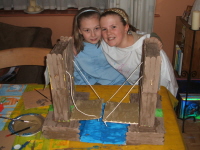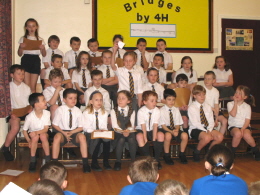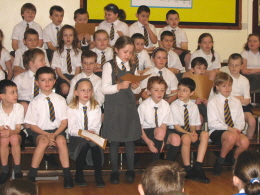 |
We speak of 'building bridges' between people who have argued, disagreed or quarelled. The pupils of 4H shared their own experiences:
- Rachel and her friend couldn't agree on a picture to put on their shared Christmas card. Eventually they decided to put one on the front and another on the back.
- Tom fell out with a football team mate over tactics on the field. They had a little fight, but then said sorry to each other.
- Olivia fell out with her brother over a TV programme. After being told off, they both apologised to each other .
|
Friends often fall out over things that are really not important but, with a little co-operation, we can build bridges and make friends again.
|










